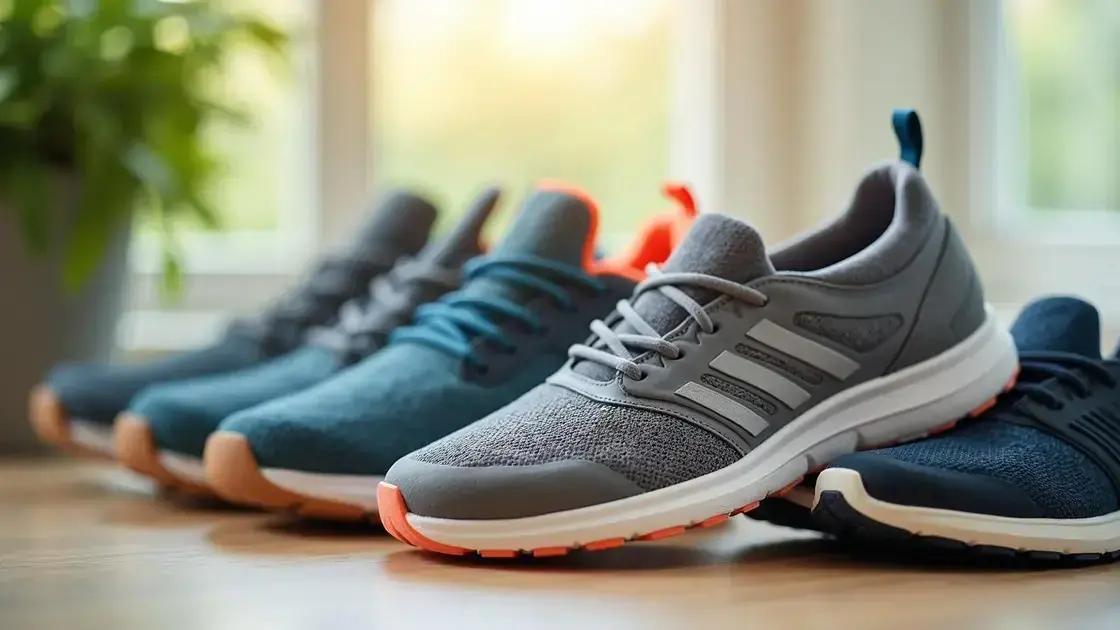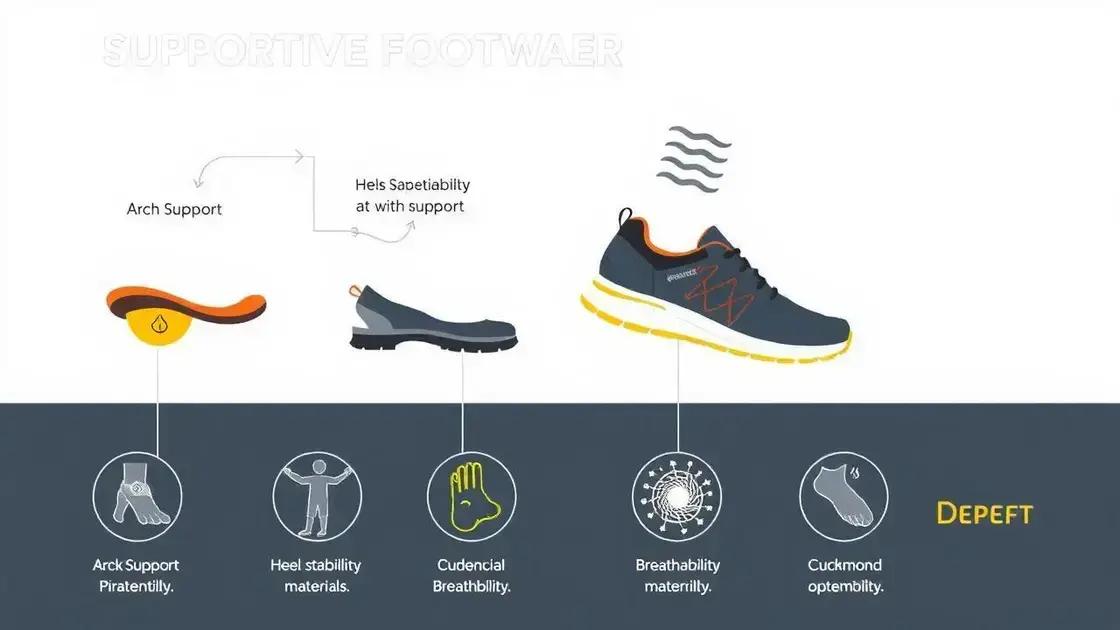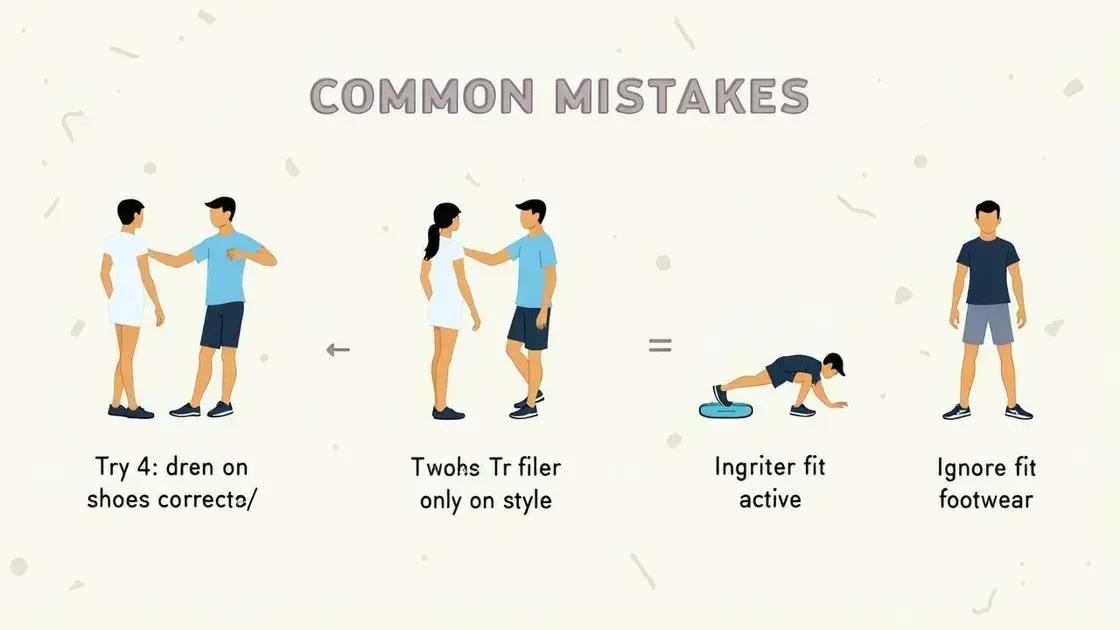Choosing comfortable and supportive shoes for active living is crucial for preventing injuries and enhancing performance. Look for features such as arch support, cushioning, and breathability, and avoid common mistakes like prioritizing style over fit. Recommended models include Nike Air Zoom Pegasus and Brooks Ghost, suitable for various activities.
Choosing the right shoes is crucial for active living. Comfortable and supportive shoes not only enhance your performance but also prevent injuries. When engaging in activities, the right footwear can make all the difference. In this guide, we will explore the importance of selecting the best shoes, the key features to look for, common mistakes to avoid, and our top recommendations to ensure your feet stay happy and healthy while you enjoy your active lifestyle.
Understanding the Importance of Comfortable Shoes

Comfortable shoes are essential for a healthy and active lifestyle. Wearing the wrong footwear can lead to various foot problems and hinder your overall performance. Whether you are running, walking, or engaging in sports, the right shoes provide the necessary support and cushioning that your feet need.
The Impact on Health
When you wear comfortable and supportive shoes, they contribute to better posture and alignment. Good shoes minimize stress on your joints and reduce the risk of injuries such as sprains and strains. They can also alleviate conditions like plantar fasciitis and shin splints, which can arise from improper shoe choices.
Enhancing Performance
For athletes and fitness enthusiasts, comfortable shoes are a game changer. They can improve your performance by providing better traction and stability. This is crucial when engaging in high-impact activities, as it allows for quicker movements and reduces fatigue.
The Importance of Fit
A proper fit is crucial when it comes to comfort. Shoes that are too tight can cause blisters and pain, while those that are too loose can lead to instability. Always try on shoes at the end of the day when your feet are slightly swollen to get a more accurate fit.
Investing in comfortable shoes is not just about style; it’s about health, performance, and overall well-being. Choosing the right footwear can make a significant difference in your daily activities and long-term foot health.
Key Features to Look for in Supportive Footwear

When choosing supportive footwear, there are several key features you should look for to ensure comfort and performance. Here are the important elements to consider:
Arch Support
One important feature is arch support. This is essential for people with high arches or flat feet. Good arch support helps distribute weight evenly, reducing strain on your feet and legs.
Cushioning
Cushioning is another vital aspect of supportive shoes. Look for shoes that have adequate padding in the midsole. This provides shock absorption, making your steps softer and more comfortable when you’re active.
Heel Stability
Heel stability is crucial for preventing injuries. Make sure the shoes have a firm heel counter that holds your heel in place. This helps in maintaining proper alignment, especially during physical activities like running or jumping.
Breathability
Breathability of the shoe material is equally important. Choose shoes made with mesh or other breathable fabrics to keep your feet cool and dry, reducing the chances of blisters and discomfort.
By focusing on these key features—arch support, cushioning, heel stability, and breathability—you will find footwear that complements your active lifestyle and keeps your feet happy.
Common Mistakes When Choosing Active Shoes

Choosing the right active shoes can be challenging. Here are some common mistakes people make when selecting footwear for their active lifestyles:
Not Trying on Shoes Later in the Day
One major mistake is trying on shoes in the morning. Your feet can swell throughout the day, so always try shoes on in the evening for a better fit. This ensures you buy shoes that accommodate any changes in size.
Focusing Only on Style
While style is important, prioritizing it over comfort and support can lead to pain. Avoid getting swayed by trendy designs without checking how comfortable they are for your feet and activities.
Ignoring the Importance of Fit
Many people assume their shoe size is the same across all brands. This can lead to purchasing shoes that are too tight or too loose. Make sure to check the fit of each pair, paying attention to toe space and heel snugness.
Choosing the Wrong Type of Shoe for Activity
Different activities require different shoes. Running shoes, walking shoes, and cross-training shoes all have distinct features. Don’t make the mistake of using one type of shoe for all activities, as this can lead to discomfort and increased injury risk.
By avoiding these common pitfalls, you can improve your chance of finding the perfect active shoes that provide comfort and support for your lifestyle.
Top Recommendations for Comfortable Active Living Shoes

When searching for comfortable active living shoes, certain models stand out for their quality and performance. Here are some top recommendations to consider:
1. Nike Air Zoom Pegasus
The Nike Air Zoom Pegasus is a popular running shoe known for its excellent cushioning and support. It provides a soft, responsive feel, making it ideal for both running and casual wear.
2. Brooks Ghost
Another great choice is the Brooks Ghost. This shoe offers superior comfort and stability, making it perfect for long workouts. Its breathable mesh upper keeps your feet cool, while the cushioned midsole absorbs impact.
3. ASICS Gel-Kayano
The ASICS Gel-Kayano is renowned for its arch support and durability. This shoe is designed for runners who require more stability and protection, ensuring a comfortable experience even on longer runs.
4. Hoka One One Bondi
The Hoka One One Bondi is a maximalist running shoe that provides exceptional cushioning. It’s great for those who prioritize comfort during long-distance activities. The plush midsole helps reduce fatigue, perfect for all-day wear.
5. New Balance Fresh Foam 1080
The New Balance Fresh Foam 1080 features a plush, breathable design. It offers superior shock absorption and a roomy toe box for added comfort, making it a favorite among walkers and runners alike.
Each of these shoes combines style, comfort, and support, ensuring your feet stay happy during all your activities.
In summary, choosing the right shoes for active living is essential for your comfort and well-being
Throughout this guide, we’ve discussed the importance of comfortable shoes, highlighted key features to look for, and explored common mistakes to avoid. Selecting supportive footwear can significantly impact your performance and health.
By focusing on brands and models that meet these criteria, such as Nike Air Zoom Pegasus and Brooks Ghost, you can enhance your active lifestyle. Properly fitted, well-cushioned shoes are fundamental to preventing injuries and ensuring you enjoy every step of your activities.
Don’t underestimate the power of the right shoes; they are an investment in your health and happiness.
FAQ – Frequently Asked Questions about Choosing Comfortable and Supportive Shoes for Active Living
Why is it important to choose comfortable shoes for active living?
Comfortable shoes prevent injuries and enhance your performance by providing the necessary support for your feet during various activities.
What are key features to look for in supportive footwear?
Look for features such as arch support, cushioning, heel stability, and breathability to ensure comfort and performance.
What common mistakes should I avoid when buying active shoes?
Common mistakes include not trying on shoes later in the day, focusing only on style, and ignoring the importance of fit or the type of shoe for your activity.
What are some top recommendations for comfortable active living shoes?
Some recommended shoes include Nike Air Zoom Pegasus, Brooks Ghost, ASICS Gel-Kayano, Hoka One One Bondi, and New Balance Fresh Foam 1080.
How can I ensure I am choosing the right size for my active shoes?
Always try on shoes at the end of the day when your feet are slightly larger, and ensure there is enough space for your toes to wiggle.
Is it necessary to use different shoes for different activities?
Yes, different activities require different types of shoes to provide the appropriate support and reduce the risk of injury.












